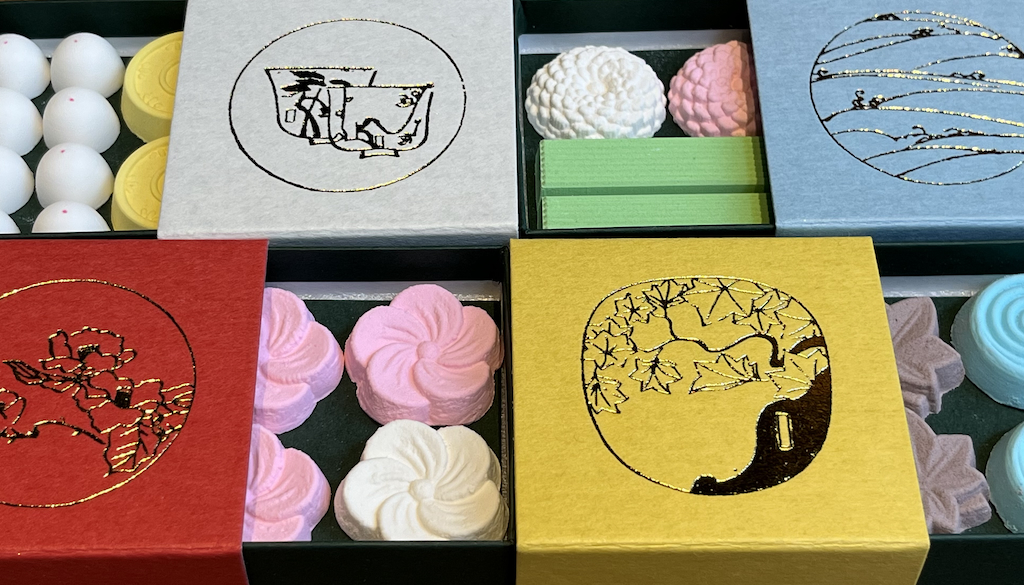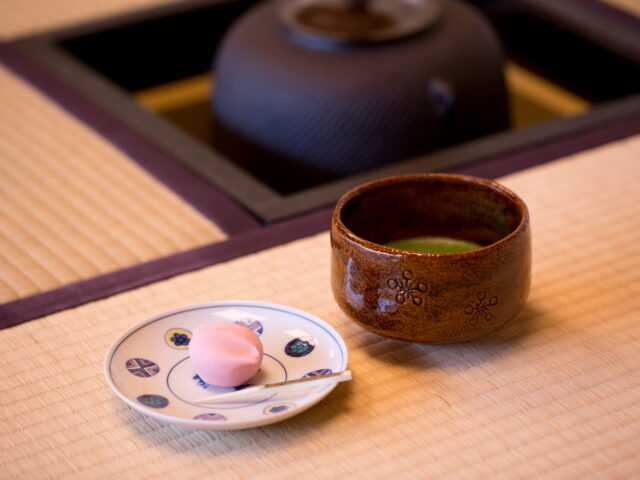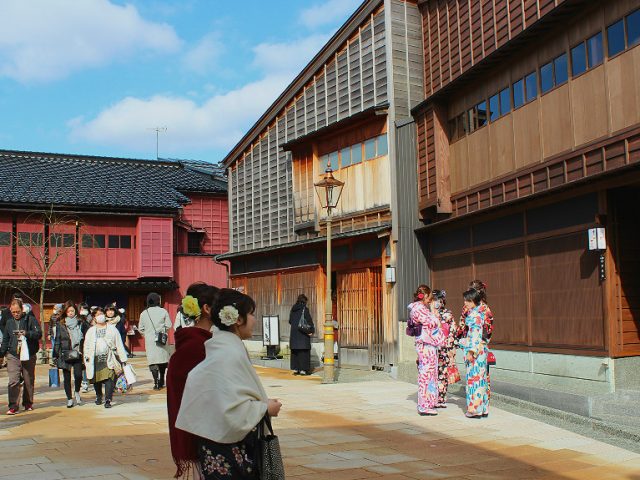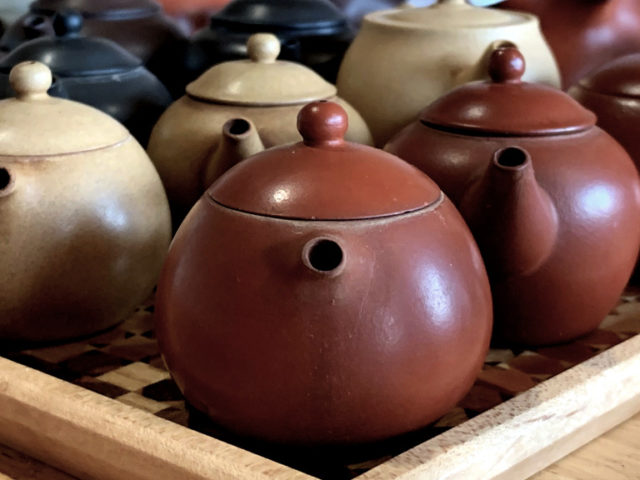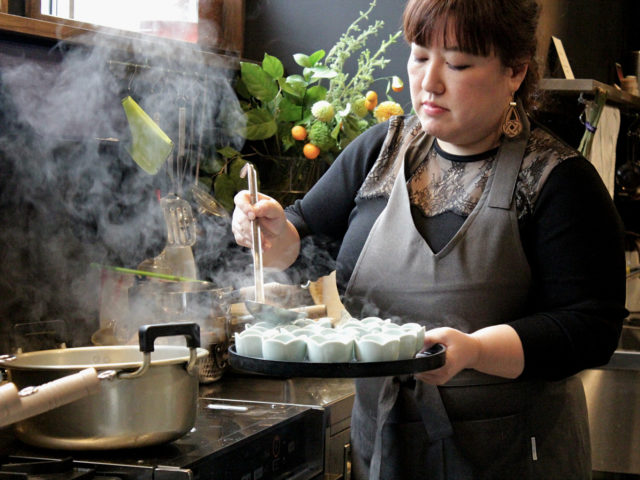Rakugan: Kanazawa’s Tea Sweet Specialty
Rakugan, a Dry Local Sweet for the Tea Ceremony
No tea ceremony is complete without an accompanying traditional confectionery. But, while most people immediately imagine the soft, flower-shaped mounds of sweet bean paste, Japanese sweets for the tea ceremony actually come in a wide variety of shapes, colors, and flavors, reflecting the trends of each region and its history. Arguably, Kanazawa’s most popular of these tea sweets is the the dry sweet, rakugan.
Unlike wasanbon, the hard Japanese sweet made purely of highly refined sugar, the similar-looking rakugan is made from a mix of wasanbon sugar and a grain powder, depending on the region. The rakugan of the Kaga region (today’s Ishikawa Prefecture) is made with rice flour, producing a confection that starts hard but melts like butter in the mouth without being overly saccharine or gritty.
Moreover, while examples of rice-flour rakugan can be found in other parts of Japan, the Kaga Region became a superior producer of the sweet in the Edo era, even establishing itself as the birthplace of one of Japan’s “three great tea sweets,” Choseiden. (Still sold today by Morihachi!)

A year-round sweet with an unusual name
Rakugan’s unusual name in Japanese literally translates to “geese landing.” Legend has it that some of the first bars of the sweet had sprinkles of sesame on top. When then Emperor Go-Mizunoh saw them, he remarked that it looked like a flock of geese settling down into a rice paddy.
With its long shelf-life, rakugan is an ideal sweet for the winter, becoming the choice sweet of the colder seasons in Hokuriku. (Incidentally, the oldest still-intact sweet in Japan is a now 200-year-old rakugan sweet!) Even so, selections of bright colors and particular shapes evoke each season, and it’s available throughout the year.
The wooden molds in which rakugan are cast have themselves become a treasured craft, and being able to create rakugan from these molds with consistent color and texture is a skill unto itself.
Where to Taste and Shop for Rakugan in Kanazawa
There are two kings of rakugan in Kanazawa, and the dedicated Japanese sweet lover must visit one each of their many stores.
Rakugan Moroe-ya

Moroe has been around for nearly two centuries. They produce adorable, bite-sized seasonal rakugan sweets in collectable boxes throughout the year, making them a frequent temptation for residents. Additionally, they specialize in several varieties of dryer sweets.
Their shop at the entry to the western geisha district of Nishi Chaya Gai and a short walk from the Ninja Temple is an easy and welcoming spot for overseas visitors on their way through the neighborhood and has a charming cafe and garden in the back. Whether you order a seasonal soft wagashi with matcha or grill your own mochi rice cakes to enjoy in a sweet sesame soup, you’ll also get a few plum-blossom-shaped rakugan sweets to whet your appetite.
Let the shop know whether a purchase is for a gift and they’ll wrap it in their signature paper, an Edo-era map of Kanazawa!
Morihachi
As with many “great” things in Japan, there are three “great sweets” that remain renown in the country, two of which are types of rakugan. One of these is Choseiden, the Kaga rakugan specialty of the four-century old traditional sweets producer, Morihachi.
Meant to appear as a bar of Chinese calligraphy ink, Choseiden’s characters (長生殿) follow the calligraphy of tea ceremony school founder, Kobori Enshu. These large rakugan are always presented in alternating white and pink, the later of which is derived from a deep red dye, to represent Japan’s colors traditional and lucky color combination of white and red.
Morihachi also sells a “Namajime” variety of Choseiden that hasn’t been fully dried and is even softer and smoother when eaten, though it does have a significantly shorter shelf life.
Any visitor with an interest in rakugan should stop by Morihachi’s Main Store close to the eastern geisha district of Higashi Chaya. The second floor houses a small museum of around 1,000 wooden molds used to make rakugan, some with incredibly imaginative designs, others made for special orders during historical events, even as recent as the Tokyo Olympics.
Opposite the museum is a cafe with a lovely view over looking the dry-bed garden of the exiled samurai, Terashima. Enjoy matcha or other teas with one of their variety of sweets. It’s here that you can also make your own rakugan at their workshop, which we’ve detailed below.
Morihachi was also a supporter of the Kanazawa Rainbow Pride Parade, producing rainbow-themed wagashi and openly supporting the parade-marchers along their route.
Making Your Own Rakugan
The Morihachi Main Store near Higashi Chaya offers rakugan-making classes twice daily. Instruction is in Japanese, but the instructor will carefully motion you through each step. On very busy days, it’s easy to follow along with other students.
A bin and utensils will be set out for you, and you’ll be given either pink or white flour to work with. It’s impolite to fuss about which color of rakugan flour or which mold shapes you get, but you can trade with mutually agreeable neighbors before you start.
First, you’ll spread the flour around to break up any lumps and ensure consistency. Then, you’ll open the paddle and dust it to keep the candies from sticking to the insides. Next, you’ll close the paddle, making sure the top is facing the right way by matching the notch on the side. Finally, you’ll fill the molds with your rakugan flour, pressing it tightly into each corner.
The pressing part is deceptively the most difficult! The flour should be packed as tightly as you can manage into each corner, or it will disintegrate too quickly when eaten or, worse, in your fingers!
Simply scrap the excess flour from the top, reopen the paddle, and tap the candies out onto your tray. If done correctly, you should produce two paddles’ worth, or about 10 candies.
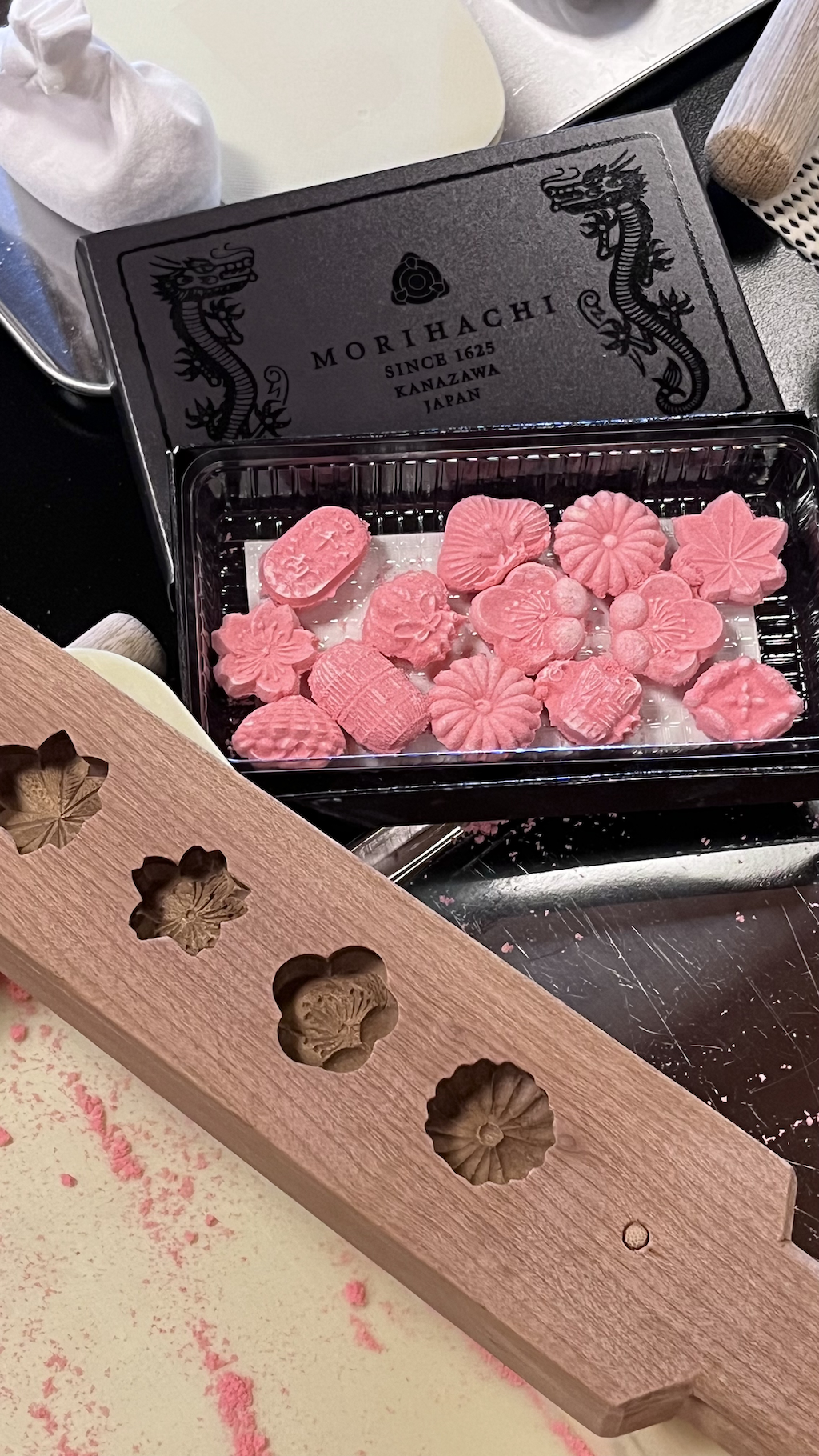
The workshop experience also includes a free ticket to the museum of rakugan candy molds.
A Sweet Souvenir
In Japan, individually wrapped sweets and snacks are common gifts upon returning from travel. However, many of these come in large boxes and can have rapidly approaching best-by dates.
For overseas travelers, rakugan is a great gift to bring home. It lasts a long time, so it keeps good even if you’re traveling for months before heading home. As it usually comes in small boxes, it’s easy to pack alongside the many other souvenirs and mementos you’re likely to pick up on your travels. As it’s a “food souvenir,” it’s a way to bring an experience and not simply an object back home, which is itself very Japanese!
Even though it’s traditionally a sweet to enjoy before matcha, it’s a lovely accompaniment to any tea or coffee, even iced. The range of shapes, often seasonal, are always distinctly Japanese and sure to bring a moment of admiration before the taste.
Morihachi and Moroe also have stores in the nearby Daiwa Department Store close to Kaname Inn Tatemachi and inside Kanazawa Station’s souvenir center, Anto, under the train platforms, so there’s always an opportunity to select a beautiful box of rakugan to take home!
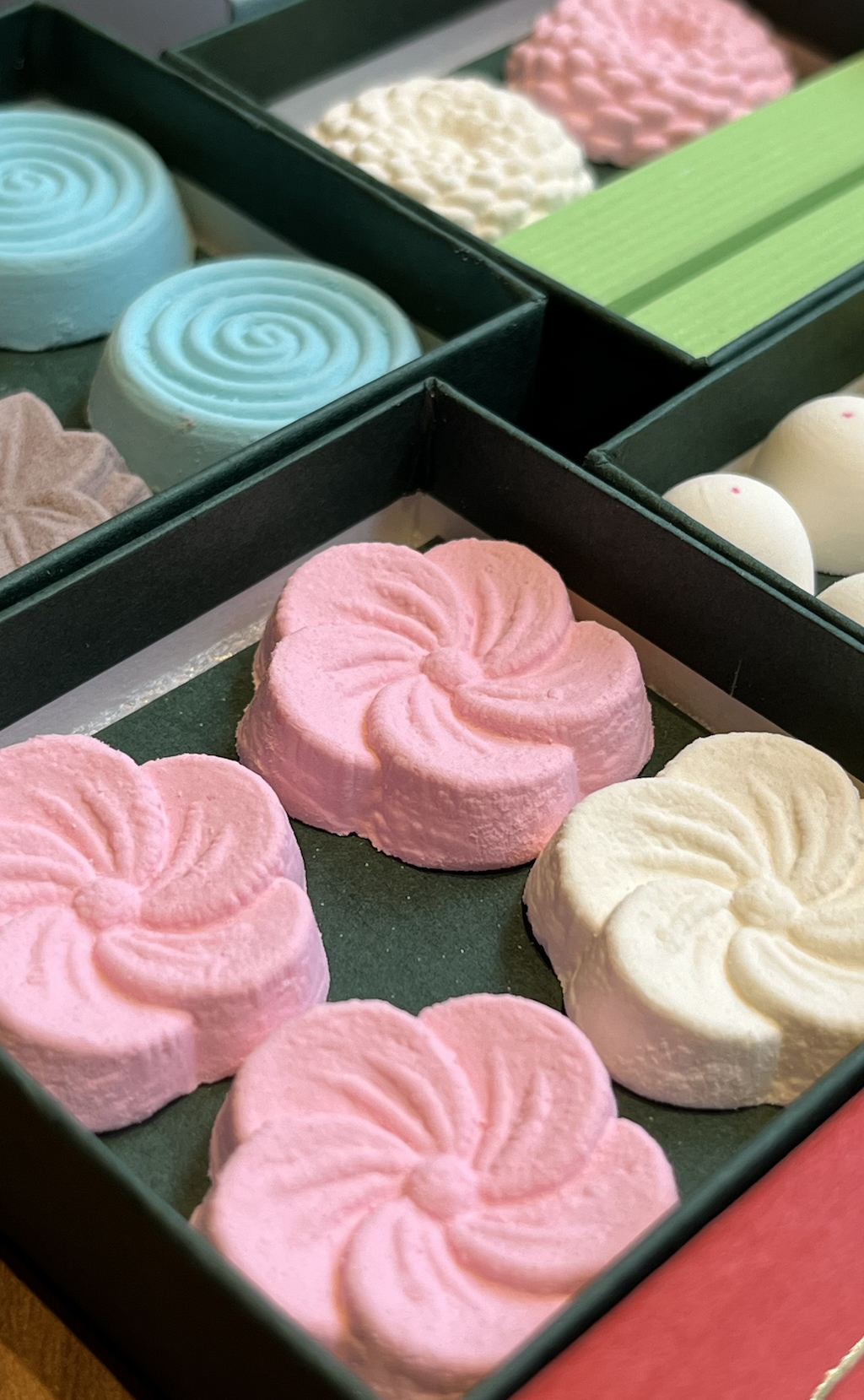

About a decade ago Rachel fell off a bus and then fell in love with this traditional-crafts and ice-cream-consuming capital of Japan. Editor and amateur photographer with a penchant for nature and history. Not actually fifty songbirds in a trench coat. (Former penname: Ryann)

